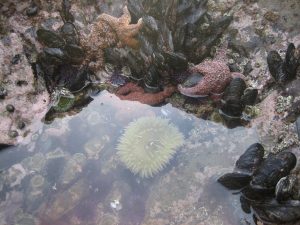
Having lived in Rhode Island for the past few years, I’ve spent summers exploring the rugged beach coves and rocky trails lining its coast. There, I encounter giant rocks dappled with puddles of seawater that appear so small as to be insignificant. A closer look reveals that these translucent pools – tide pools – are teeming with life.
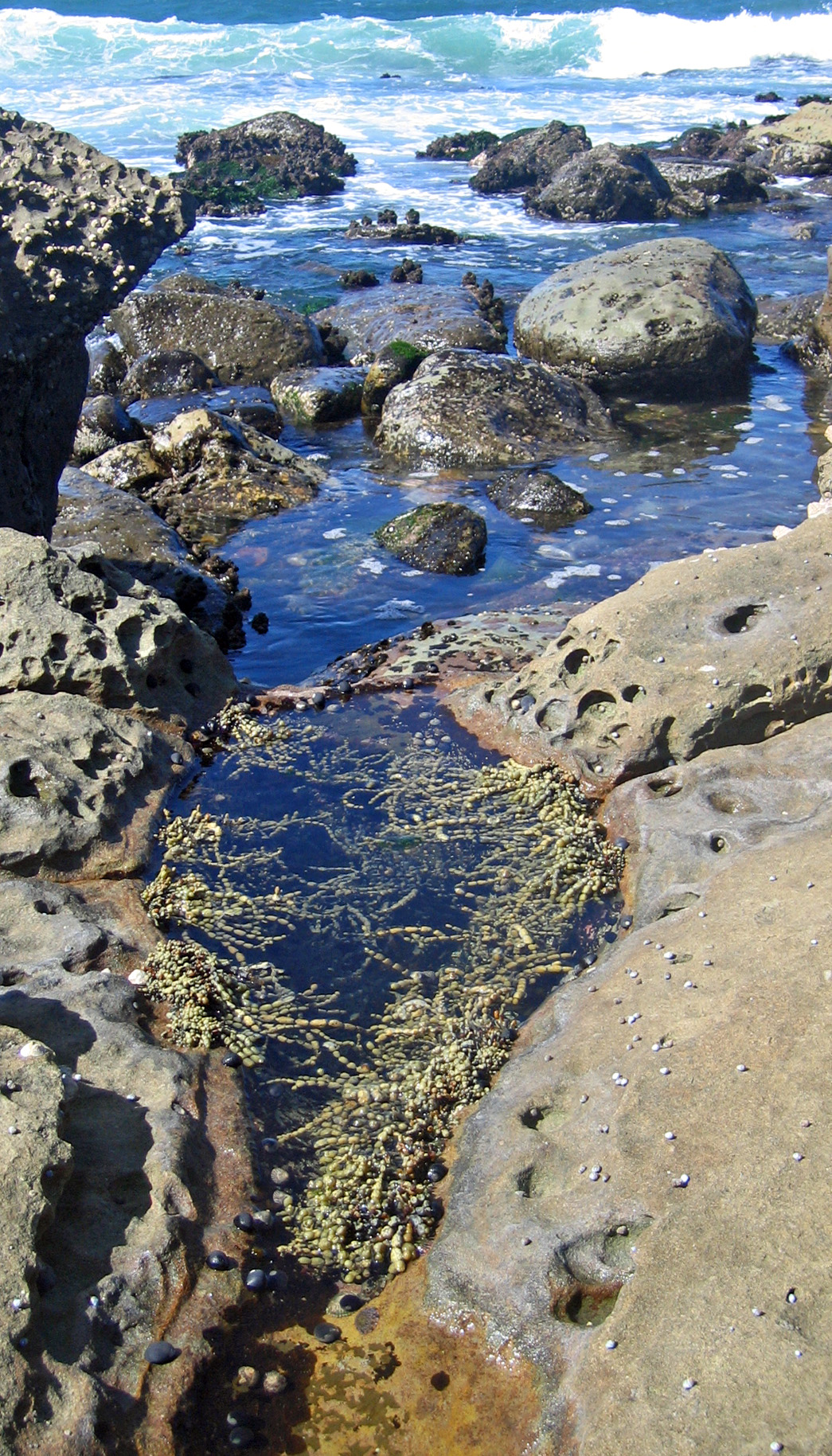
The author John Steinbeck was well-acquainted with the complexity of life in a tide pool. Beyond classic novels like the Depression-era The Grapes of Wrath, he published a book detailing his six-week expedition along the Gulf of California in 1940, entitled The Log of the Sea of Cortez. In it, he recounts collecting marine specimens with his close friend, Ed Ricketts – one of the first marine biologists to study seashore ecology. He discovered by peering into a tide pool that the individual is inextricably linked with the whole, advising us to “look from the tide pool to the stars and then back to the tide pool again” to appreciate our connection to the universe. This year, marine ecologists at the Universidade de Lisboa in Portugal have done just that.
Well, sort of. While Steinbeck meditated on the meaning of his existence while gazing into a tide pool, researcher Valencia Mendonca and her team sought to describe the structure of a food web within one. As it turns out, its food web can be as intricate as those of larger ecosystems.
Puddles of life
Tide pools are shallow baths of seawater that emerge on rocky shores as the tides rise and fall throughout the day. Despite their ever-changing environments, these ecosystems can be quite diverse and productive. From microscopic organisms up to crabs and fish, business is bustling in these baths. While some fauna arrive seeking refuge from their perilous surroundings, others go there to feed.
While the chaos in the environment makes for some instability, tide pools are easily accessible. Their small size and reachability makes them much easier to study than more open ecosystems such as estuaries, rivers, and lakes. Still, little is known about the structure of food webs (interconnected networks of what-eats-what) within these habitats. If they’re similar to those of other ecosystems, could we use them as outdoor laboratories to study the fundamentals of larger-scale food webs?
Solving the tide pool puzzle piece by piece
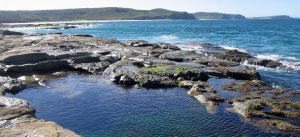
To cover their bases, the researchers collected samples from tide pools at six locations around the world in the summers of 2013 to 2015 – from the east coasts of northern Canada and Brazil to the United Kingdom and Portugal – covering cold, temperate, and tropical climates (see Figure 4).
A total of 116 tide pools were sampled. Fishes and crabs were netted. Sponges, mussels, starfish, and the like were picked by hand. Pool depth – which ranged from about two inches to two and a half feet – was recorded for each tide pool along with temperature and location.
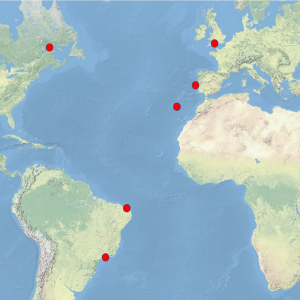
After these data were catalogued, the researchers constructed food webs for the tide pools based off of what was already known about the diet of each organism. They were organized into trophic species – groups of organisms with the same set of predators and prey – a practice which avoids biases related to the sampling of each. The same was done for larger-scale marine, estuarine, river, lake, and land ecosystems from previous studies. To help describe the complexity of a given food web, the links between each trophic species must be considered. The more links between each species – from top predators to the most basic prey – the more complex its structure.
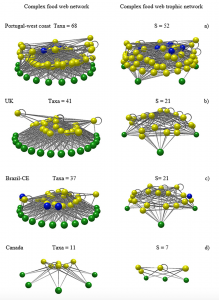
The amount of trophic species in the sampled tide pools (ranging from 7 to 52 species) was considerably lower than larger marine ecosystems (ranging from 25 to 245 species), as were the links per species (the average amount of links each species shares with others, L/S for short), mainly owing to their small spatial range. However, the connectance (a measure of the directional links each species shares with another or itself) was often higher! The key difference between L/S and connectance is that the latter is directional – meaning a link from species A to B is distinct from B to A. One species can even have a link to itself – indeed, these are the species that eat their own kind. A high connectance indicates that tide pool food webs are complex, but perhaps in different ways than larger ecosystems.
The varying tide pool food web networks were visualized in Figure 5, from the most complex (in Portugal, top) to the most basic (in Canada, bottom). The trophic species were differentiated by color, with green spheres indicating those at the base of the food web (such as algae), yellow indicating invertebrates (those without a spine, such as crabs, snails, and clams), and blue indicating vertebrates (those with a spine, such as fish and turtles). While a higher number of trophic species can indicate complexity of the food web, the connections each species makes with others adds much more to its intricacy.
Complexity can come with consequences, like cannibalism and coprophagia
The similarities between tide pools and larger ecosystems may have implications for the way we can do ecological research. For example, if a tide pool has a food web comparable to an estuary, what’s stopping us from using it as an outdoor lab to study estuarine ecosystems?
Hold up – it’s not that simple. Although the tide pool food web structure can be as complex as more open ecosystems, the rough conditions inside tide pools make them unique and not exactly comparable to them. A primary difference is that there is a higher proportion of species who are cannibals – that is, those who eat their own kind – and coprophagists (detrivores) – those who eat poop (detritus, pronounced deh-TRY-tuss) – than in larger, more stable ecosystems. In fact, so many organisms eat poop in tide pools that detritus is considered its own node in the food web network, despite not even being an organism!
Tough times call for tough measures in a cesspool. I mean, tide pool.
Despite these challenges, in the future we may be able to use tide pool properties as proxies to understand the bigger picture. Still, a lot of work needs to be done to assess just how useful they can be. In the mean time, I would advise you to gaze into a tide pool and contemplate your existence. Or maybe just dinner.
I’m a PhD student at the University of Rhode Island’s Graduate School of Oceanography. I use a small-scale computer model to study how physical features like surface waves at the air-sea interface produce friction for the wind that can limit momentum, energy, gas, and heat exchange between the ocean and atmosphere. In the future, I hope to learn more about the role waves play in different parts of the world as weather and climate patterns evolve. Also, I love to write.


